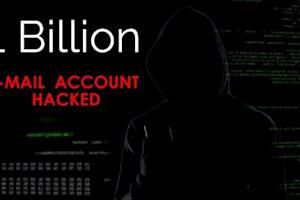In today's increasingly connected world, remote access has become a necessity for many organizations to allow their employees to work from anywhere, at any time. While this may have its benefits, it also presents a significant security risk. Cybercriminals are always on the lookout for ways to exploit vulnerabilities in remote access systems and use them to launch spearphishing and other phishing attacks. These attacks can be devastating, resulting in stolen credentials, data breaches, financial losses, and reputational damage.
In this article, we will explore how remote access users can protect themselves from these attacks and reduce the risk of falling prey to cybercriminals. We will discuss best practices for protection, steps for enhancing security awareness, and the importance of taking proactive steps to secure remote access systems.
What Is Spear Phishing?
Spear phishing is a type of targeted phishing attack that is directed towards a specific individual or group, such as employees of a particular organization. Unlike traditional phishing attacks, which are sent in bulk to a large number of people, spear phishing attacks are highly customized and personalized. The attackers gather information about their target, such as their name, email address, job title, and company, and use this information to craft a convincing message that appears to be from a legitimate source, such as a colleague, boss, or business partner.
The message often includes a call to action, such as clicking on a link or opening an attachment, which can result in the theft of sensitive information or the installation of malware on the victim's computer. Spear phishing attacks are often successful because they exploit the trust that exists between the sender and recipient, and are more difficult to detect and defend against than traditional phishing attacks.
What Other Types Of Phishing Are There?
In addition to spear phishing, there are several other types of phishing attacks that cybercriminals use to target individuals and organizations. Here are some common types of phishing attacks that you should look out for:
Clone phishing: Clone phishing involves creating a fake replica of a legitimate email or website and sending it to the victim. The attacker creates an email or website that appears to be from a legitimate source, such as a bank or social media platform, and lures the victim into providing sensitive information.
Whaling: Whaling is a type of phishing attack that targets high-profile individuals, such as executives, CEOs, or other high-ranking officials. The attacker creates a message that appears to be from a trusted source, such as a colleague or business partner, and uses social engineering tactics to trick the victim into revealing sensitive information or transferring funds.
Pharming: Pharming involves redirecting users to fake websites that are designed to look like legitimate sites. Attackers use techniques such as DNS cache poisoning or malware to redirect users to a fake site, where they may be prompted to enter sensitive information.
Vishing: Vishing, or voice phishing, is a type of attack that uses voice messages or phone calls to trick victims into providing sensitive information. The attacker may pose as a representative of a legitimate organization, such as a bank or government agency, and use social engineering tactics to persuade the victim to reveal their personal or financial information.
Smishing: Smishing, or SMS phishing, involves sending text messages that appear to be from a legitimate source, such as a bank or retailer, and luring the victim into providing sensitive information or clicking on a link.
It's important for remote access users to be aware of these different types of phishing attacks and to follow best practices for protection to reduce the risk of falling prey to them.
Understanding The Potential Risks Of Remote Access
Remote access has become a fundamental requirement for many organizations to enable their employees to work remotely or from home. However, remote access can also increase the risk of phishing attacks. Here's how:
Increased Attack Surface: With remote access, the number of endpoints that can be targeted by cybercriminals increases significantly. This makes it easier for them to exploit vulnerabilities and gain access to sensitive information.
Reduced Visibility: Remote workers may not have the same level of visibility and control over their devices and networks as they do in the office. This makes it easier for cybercriminals to launch phishing attacks and compromise the devices and networks.
Different Types of Remote Access: There are several types of remote access methods, including virtual private networks (VPNs), remote desktop protocols (RDPs), and cloud-based services. Each of these methods has its vulnerabilities that can be exploited by cybercriminals.
Here are some examples of the vulnerabilities associated with different types of remote access methods:
VPNs: VPNs can be vulnerable to cyber-attacks if not properly configured or if outdated encryption methods are used. Additionally, if an attacker gains access to a user's VPN credentials, they can potentially use them to launch a spear-phishing attack.
RDPs: RDPs are often targeted by cybercriminals because they provide remote access to entire networks. If a user's RDP credentials are compromised, an attacker can potentially gain access to sensitive data and systems.
Cloud-Based Services: Cloud-based services are becoming increasingly popular for remote access. However, these services are also vulnerable to phishing attacks, especially if users are not properly trained on how to identify and avoid phishing emails.
In the next section, we will discuss best practices for protecting remote access users from phishing attacks.
Best Practices For Protection From Spear Phishing And Other Phishing Attacks
There are several best practices that remote access users can follow to protect themselves from phishing attacks. These practices include:
Use of Strong and Unique Passwords: Using strong and unique passwords can significantly reduce the risk of a successful phishing attack. Passwords should be at least 12 characters long and include a mix of uppercase and lowercase letters, numbers, and special characters. Additionally, users should avoid using the same password across multiple accounts.
Two-Factor Authentication (2FA) and Multi-Factor Authentication (MFA): 2FA and MFA provide an extra layer of security beyond passwords by requiring users to provide a second form of identification, such as a code sent to their mobile phone or a biometric identifier. This can prevent cybercriminals from gaining access even if they have the user's password.
Education and trainings for employees: The most effective way to combat all forms of phishing is through education. It is crucial to instruct employees to refrain from clicking on links or downloading files from email or SMS messages. Caution should be exercised when sharing personal details on social networks that could be exploited in spear phishing campaigns. It is also important to keep in mind that legitimate service providers, including Splashtop, never request passwords or personally identifying information via email.
Implementation of Security Software and Firewalls: Installing security software and firewalls can help to detect and prevent phishing attacks. These tools can scan emails and other messages for signs of phishing, and block malicious websites and downloads.
Avoiding Public Wi-Fi and other Unsecured Networks: Public Wi-Fi and other unsecured networks can be easy targets for cybercriminals. Users should avoid using these networks for sensitive tasks such as accessing bank accounts or company resources.
Being Cautious when Clicking on Links or Opening Attachments: Users should be cautious when clicking on links or opening attachments, especially if the email is from an unknown sender or appears suspicious. They should hover over links to check if they lead to legitimate websites and verify the sender's email address before opening any attachments.
By following these best practices, remote access users can significantly reduce the risk of falling prey to spear-phishing and other phishing attacks. In the next section, we will discuss steps for enhancing security awareness.
How Splashtop Protects Users From Spear Phishing And Other Phishing Attacks
Security is a top priority of Splashtop. Our products are designed with a comprehensive set of security features to ensure the safety of our users. This includes device authentication, two-factor authentication, single sign-on, session recording and logging, and IP whitelisting. To protect against unauthorized access, each session and user data is encrypted. Splashtop products also incorporate role-based access controls, regular account reviews, and logging to maintain compliance and security standards.
To further enhance our security offerings, we have partnered with BitDefender to provide industry-leading endpoint security technology for managed computers.
Additionally, our customized SOS app includes a pop-up warning to help users ensure that they are starting a session with a trusted source. To maintain security standards, our team carefully reviews every customized SOS account, and any irregular accounts are promptly rejected. For example, we monitor for accounts attempting to access a higher number of computers than expected or from different geographical locations.
Conclusion
At Splashtop, we understand the importance of protecting our users from phishing attacks. Cybercriminals are always looking for ways to exploit vulnerabilities in remote access systems, making it crucial for users to take proactive steps to secure their remote access sessions.
We protect our users with a set of security features, including two-factor-authentication, multi-level password security, blank screen, screen auto-lock and many more. Learn more about our security features.
We also encourage our users to stay informed and aware of the latest phishing tactics and to regularly review and update their security measures. By following best practices such as using strong and unique passwords, enabling two-factor authentication, and being cautious when clicking on links or opening attachments, users can significantly reduce the risk of falling prey to spearphishing and other phishing attacks.
By taking these proactive steps, our users can enjoy a safe and secure remote access experience with Splashtop.





